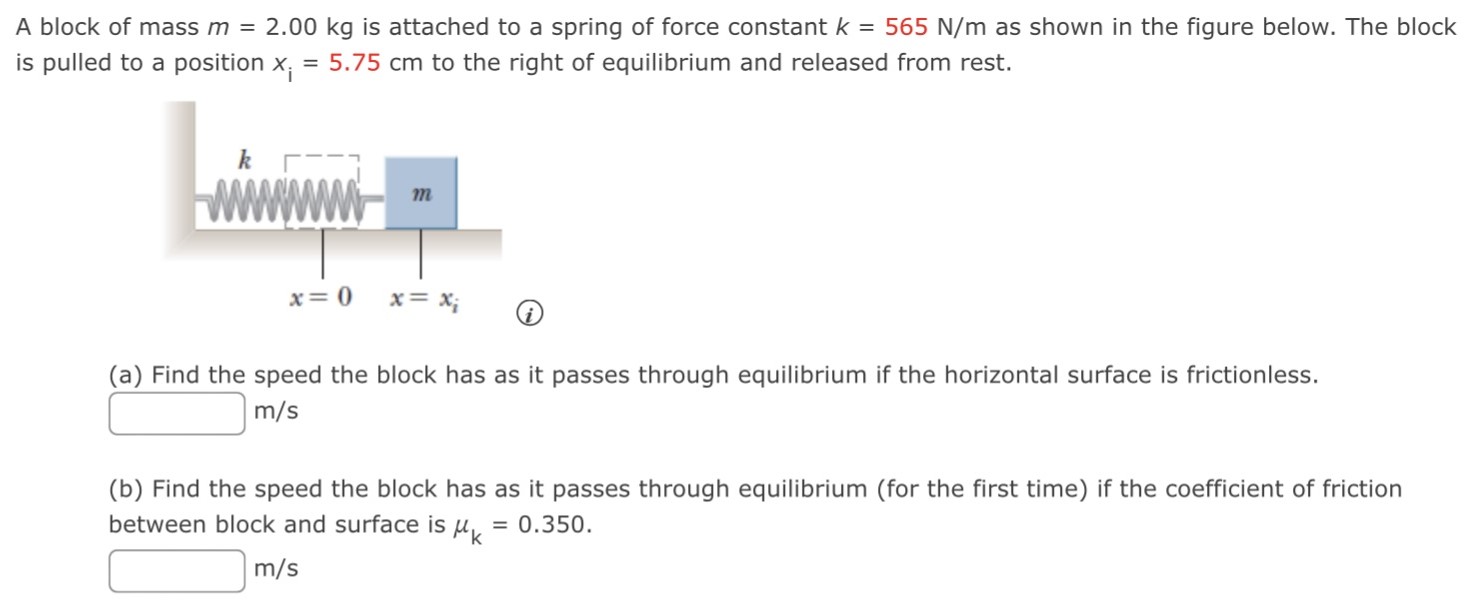A block of mass m = 2.00 kg is attached to a spring of force constant k = 565 N/m as shown in the figure below. The block is pulled to a position xi = 5.75 cm to the right of equilibrium and released from rest. (a) Find the speed the block has as it passes through equilibrium if the horizontal surface is frictionless. m/s (b) Find the speed the block has as it passes through equilibrium (for the first time) if the coefficient of friction between block and surface is μk = 0.350. m/s
